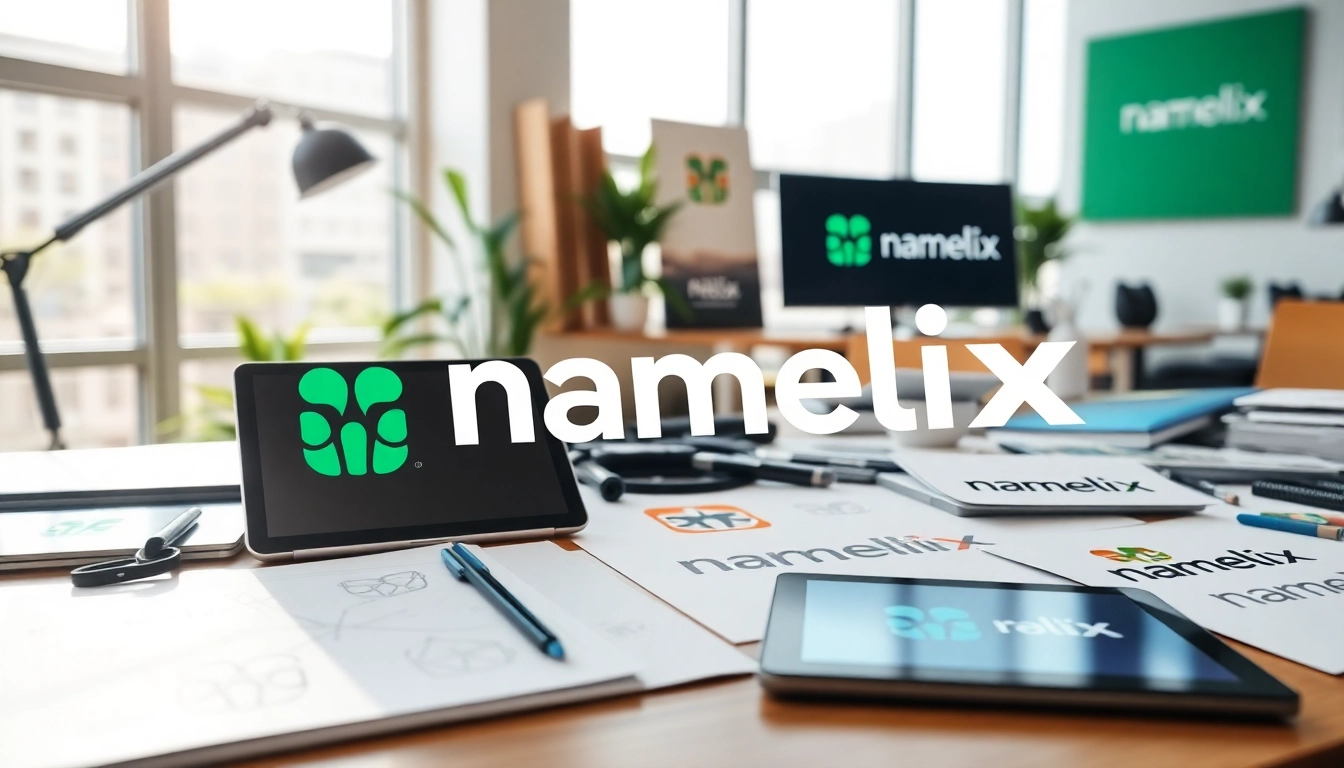Understanding Event Planning Fundamentals
Event planning is a multifaceted discipline that encompasses the execution of large and small gatherings alike. Whether organizing a corporate conference, a wedding, a festival, or an intimate dinner party, every event mandates a meticulous approach toward achieving a seamless experience. This comprehensive guide will delve into various aspects of event planning, providing insights and best practices to elevate your planning skills. For those eager to learn more about this vibrant field, Event Planning serves as an expansive resource spanning essential strategies and innovative ideas.
Defining Event Planning Goals
The foundation of successful event planning lies in clearly defined goals. These objectives act as a compass guiding the planning process, ensuring that every decision made aligns with the overarching mission of the event. Key goals may include enhancing brand visibility, fostering community engagement, generating leads, or celebrating significant milestones. To articulate these goals effectively:
- Smart Objectives: Utilize the SMART criteria—Specific, Measurable, Achievable, Relevant, Time-bound—to develop actionable goals.
- Audience Identification: Understand your audience demographics to tailor the event experience accordingly.
- Feedback Mechanisms: Incorporate feedback loops to gauge the effectiveness of your goals post-event.
Recognizing Different Types of Events
Event planning encompasses a diverse range of gatherings, each with unique requirements and challenges. Understanding different types of events assists planners in customizing strategies and resources accordingly. Here are some common types of events:
- Corporate Events: Includes conferences, seminars, and off-site retreats aimed at professional development.
- Social Events: Encompasses weddings, birthday parties, and family reunions, focused on personal celebration.
- Fundraising Events: Designed to raise money and awareness for a cause, these events span gala dinners to charity runs.
- Cultural Events: Events like festivals and art exhibits that highlight cultural expressions and gatherings.
Key Components of Successful Events
Successful events share several key components that contribute to their effectiveness and memorability. Understanding and integrating these components can enhance the event planning process:
- Venue Selection: The right venue sets the tone and provides the necessary facilities for your event.
- Logistic Management: Detailed logistical planning ensures that every aspect of the event runs seamlessly—from setup to breakdown.
- Marketing and Promotion: Effective marketing strategies are pivotal in attracting the right audience and generating buzz.
- Post-Event Activities: Evaluating attendance, collecting feedback, and analyzing outcomes are crucial for continuous improvement.
Essential Skills for Effective Event Planning
Being an accomplished event planner requires a unique blend of various skills. The ability to navigate challenges and design exceptional experiences hinges on the following essential skills:
Communication and Negotiation Techniques
Effective communication is at the heart of successful event planning. Planners must articulate their vision to stakeholders clearly and negotiate efficiently with vendors, venues, and clients. Key strategies include:
- Active Listening: Understanding the needs and concerns of stakeholders creates a collaborative environment.
- Persuasion: Utilizing persuasive communication can help in negotiating favorable terms.
- Promoting Clarity: Providing clear instructions and updates can prevent misunderstandings, reducing stress for both planners and attendees.
Time Management and Organization Traits
Time is often the most restricted resource in event planning. Developing robust time management skills is crucial for meeting deadlines and ensuring comprehensive preparation. Proven tactics include:
- Prioritization: Delivering priorities helps planners focus on critical tasks that require immediate attention.
- Project Management Tools: Employing software can streamline task allocation and tracking, enhancing efficiency.
- Checklists: Detailed checklists serve as reminders and help ensure all aspects are addressed before the event.
Building a Reliable Vendor Network
A well-established network of reliable vendors is vital for seamless event execution. Building and maintaining these relationships involves:
- Due Diligence: Research vendors’ reputations, read reviews, and ask for recommendations.
- Establishing Trust: Regular communication and transparency foster trust between planners and vendors.
- Negotiating Contracts: Ensuring contracts are clear and favorable protects both parties and enhances cooperation.
Crafting the Perfect Event Experience
Creating a memorable event experience for participants is one of the most critical aspects of event planning. This section breaks down the elements that contribute to an engaging atmosphere:
The Importance of Theme and Decor in Event Planning
Setting a theme for an event is instrumental in creating a cohesive environment. The right decor reflects the theme and resonates with attendees, enhancing the overall experience:
- Thematic Consistency: Ensure all elements—from invitations to table settings—align with the theme.
- Guest Experience: Consider how decor impacts guests’ emotional responses and interactions during the event.
- Trends and Innovations: Keeping abreast of design trends can inspire creativity in decor choices.
Engaging the Audience through Interactive Experiences
Audiences today crave engagement and interactivity. Planners can utilize various strategies to foster interaction, such as:
- Live Polls: Incorporating live polling engages attendees and gives them a voice in discussions.
- Workshops and Breakout Sessions: Hands-on activities enable deeper engagement and knowledge-sharing.
- Networking Opportunities: Structured networking during events encourages collaboration and connection.
Utilizing Technology for Enhanced Event Interaction
Technology plays an increasingly essential role in the event planning landscape. Leveraging the right tools can enhance attendee engagement and streamline processes:
- Event Apps: These platforms can facilitate schedules, notifications, and attendee networking.
- Virtual and Augmented Reality: Incorporating VR and AR can create unique, immersive experiences for attendees.
- Social Media Integration: Engaging audiences on social media can enhance event visibility and promote real-time interactions.
Budgeting and Resource Allocation in Event Planning
A comprehensive budget is arguably the most crucial aspect of event planning. It dictates everything from the scale to the quality of the event. Establishing and managing your budget should involve:
Developing a Comprehensive Budget Plan
Creating an exhaustive budget plan requires a detailed breakdown of all anticipated expenses and income. Critical steps include:
- Identifying Costs: Categorize expected costs such as venue, catering, entertainment, and marketing.
- Revenue Streams: Explore various funding avenues, including sponsorships, ticket sales, and merchandise.
- Contingency Fund: Set aside a portion of the budget for unexpected expenses, ensuring financial flexibility.
Cost-Saving Tips for Event Planners
Staying within budget is often a challenge. However, several strategies can help mitigate costs without sacrificing quality:
- Negotiation Skills: Use negotiation techniques to secure better rates with vendors and venues.
- Off-Peak Discounts: Consider scheduling events during off-peak seasons or times to take advantage of lower rates.
- DIY Elements: Incorporating handmade decor or personal touches can reduce costs while enhancing authenticity.
Allocating Resources for Maximum Impact
Resource allocation refers to effectively distributing the budget, time, and personnel to achieve desired outcomes. Approach this with the following methodologies:
- Prioritizing Spending: Invest more in areas that significantly impact attendee experience and satisfaction.
- Leveraging Skills: Utilize the strengths of team members to maximize productivity and creativity.
- Monitoring Resource Use: Continuous monitoring ensures that resources are being used effectively without exceeding the budget.
Measuring Success in Event Planning
The success of any event hinges not only on execution but also on measuring its impact. Implementing methods of assessment can enhance future events:
Establishing Key Performance Indicators
Key Performance Indicators (KPIs) serve as metrics to evaluate the event’s success in achieving its goals. Effective KPIs may include:
- Attendance Rates: Measuring how many attendees participated versus how many were expected.
- Engagement Metrics: Evaluating attendee participation through feedback forms, social media interactions, and session attendance.
- Return on Investment: Assessing the profitability by comparing costs against revenue generated through the event.
Gathering and Analyzing Feedback
Feedback from attendees offers invaluable insights for future events. Effective methods include:
- Post-Event Surveys: Disseminate surveys immediately after the event to capture fresh perspectives.
- Focus Groups: Organize focus group discussions to dive deeper into attendees’ experience.
- Digital Analytics: Analyze engagement metrics via digital platforms to ascertain areas of improvement.
Continuous Improvement for Future Events
Learning from each event is crucial for growth and improvement. Strategies for continuous improvement include:
- Document Lessons Learned: Maintain a record of successes and areas needing improvement post-event.
- Implement Changes: Adjust planning processes based on feedback and performance metrics.
- Training and Development: Invest in professional development opportunities for planners and team members to stay updated with industry standards.













Leave a Reply